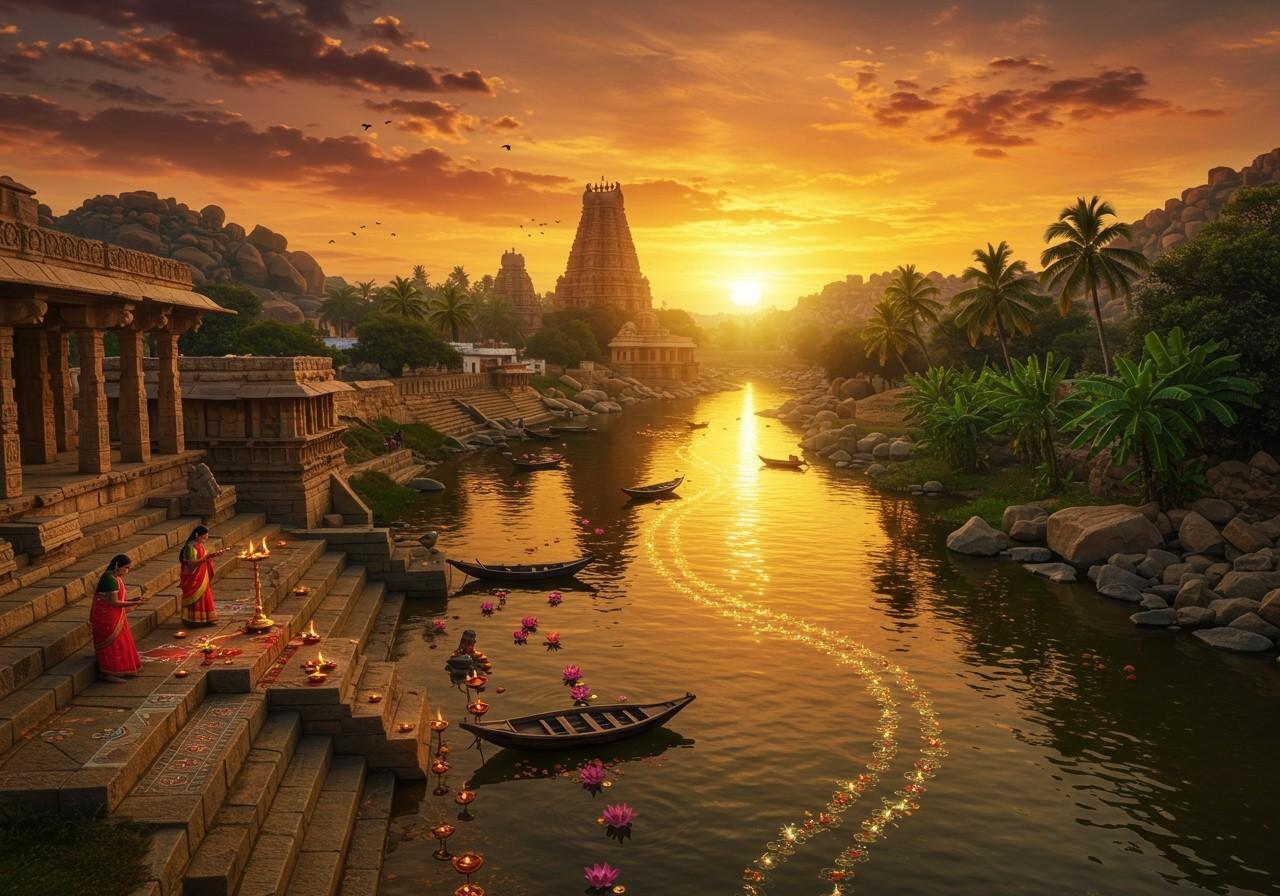
The Tungabhadra River holds immense cultural and historical significance in Southern India. Flowing through Karnataka and Andhra Pradesh, this vital waterway has played a crucial role in agriculture, industry, and religious practices for centuries. This article delves into frequently asked questions about the Tungabhadra River, providing insights into its length, course, tributaries, ancient names, and the dam associated with it.
Exploring the Tungabhadra River: A Comprehensive Guide
The Tungabhadra River, a major river in Southern India, originates at the confluence of the Tunga and Bhadra rivers in Koodli, Karnataka. Its significance in agriculture is undeniable, supporting the livelihoods of millions. Moreover, its religious importance is evident in the numerous temples and pilgrimage sites along its banks.
Length of the Tungabhadra River
Spanning approximately 531 kilometers (330 miles), the Tungabhadra River begins its journey in the Western Ghats, meandering through forests, plains, and urban areas before merging with the Krishna River. This extensive length establishes it as a vital waterway for irrigation and drinking water.
Course of the Tungabhadra River
The Tungabhadra River primarily flows through Karnataka and Andhra Pradesh. Originating in the Western Ghats, it traverses major cities like Hospet and Kurnool, ultimately joining the Krishna River near Alampur. The river’s basin encompasses a substantial area, supporting diverse ecosystems and agricultural activities.
Tungabhadra River: A Tributary of the Krishna
The Tungabhadra River serves as a tributary of the Krishna River, one of India’s longest rivers. Their confluence in Andhra Pradesh, where the Tungabhadra merges with the Krishna, enhances the latter’s flow and volume. This connection is essential for water management and irrigation systems in the region.
The Tungabhadra Dam
Located near Hospet, Karnataka, the Tungabhadra Dam harnesses the power of the Tungabhadra River. Constructed in 1953, this multipurpose project provides irrigation, drinking water, and hydroelectric power, significantly impacting regional agriculture by enabling year-round cultivation.
Ancient Name of the Tungabhadra River
Historical texts and epics like the Ramayana refer to the Tungabhadra River by its ancient name, “Pampa.” Revered in ancient times for its purity and life-sustaining properties, understanding its historical significance enriches our appreciation of the river’s cultural importance today.
Poojn.in: Your Partner for Tungabhadra River Rituals
Poojn.in, India’s leading cultural goods and services store, offers a wide selection of puja items essential for performing rituals at the sacred Tungabhadra River. We provide complete puja kits, including pure cotton vastras, kumkum, turmeric, camphor, incense sticks, and more.
- Comprehensive Puja Kits: Our kits include everything you need for a traditional ceremony, from cotton vastras and sacred powders to incense and offerings. We ensure quality and authenticity in every item.
- Delivery Services: We deliver to major locations along the Tungabhadra River, including Hampi, Hospet, and surrounding areas, bringing the sacred directly to you.
- Specialized Items: We offer specialized items for specific river-related rituals, such as Pitru Puja, Ganga Puja, River Goddess worship, and Naga Puja, catering to diverse spiritual needs.
- Authenticity and Tradition: All items available at Poojn.in are sourced from verified vendors and adhere to traditional requirements, ensuring a genuine and meaningful experience.
Visit Poojn.in to explore our complete collection or contact our customer service for specific requirements related to Tungabhadra River rituals. Learn more about establishing a divine presence with our curated selection of products.
For those interested in exploring the spiritual journey to Sringeri, we recommend reading our blog posts on Sringeri: Karnataka’s Sacred Heart, Sringeri Sharada Peetham, and Sringeri Pilgrimage Guide. You can also explore the Sringeri Temples and the connection between the Tunga River and Sringeri.
Conclusion
The Tungabhadra River is more than just a waterway; it’s a lifeline sustaining the land and its people. From the Western Ghats to its confluence with the Krishna, it plays a vital role in agriculture, water supply, and cultural traditions. Understanding its length, course, tributary, and historical name enhances our appreciation for its significance. The Tungabhadra Dam exemplifies human ingenuity in utilizing natural resources for societal betterment. As we honor the traditions and history associated with this majestic river, we also embrace modern solutions to protect and cherish it for generations to come.


